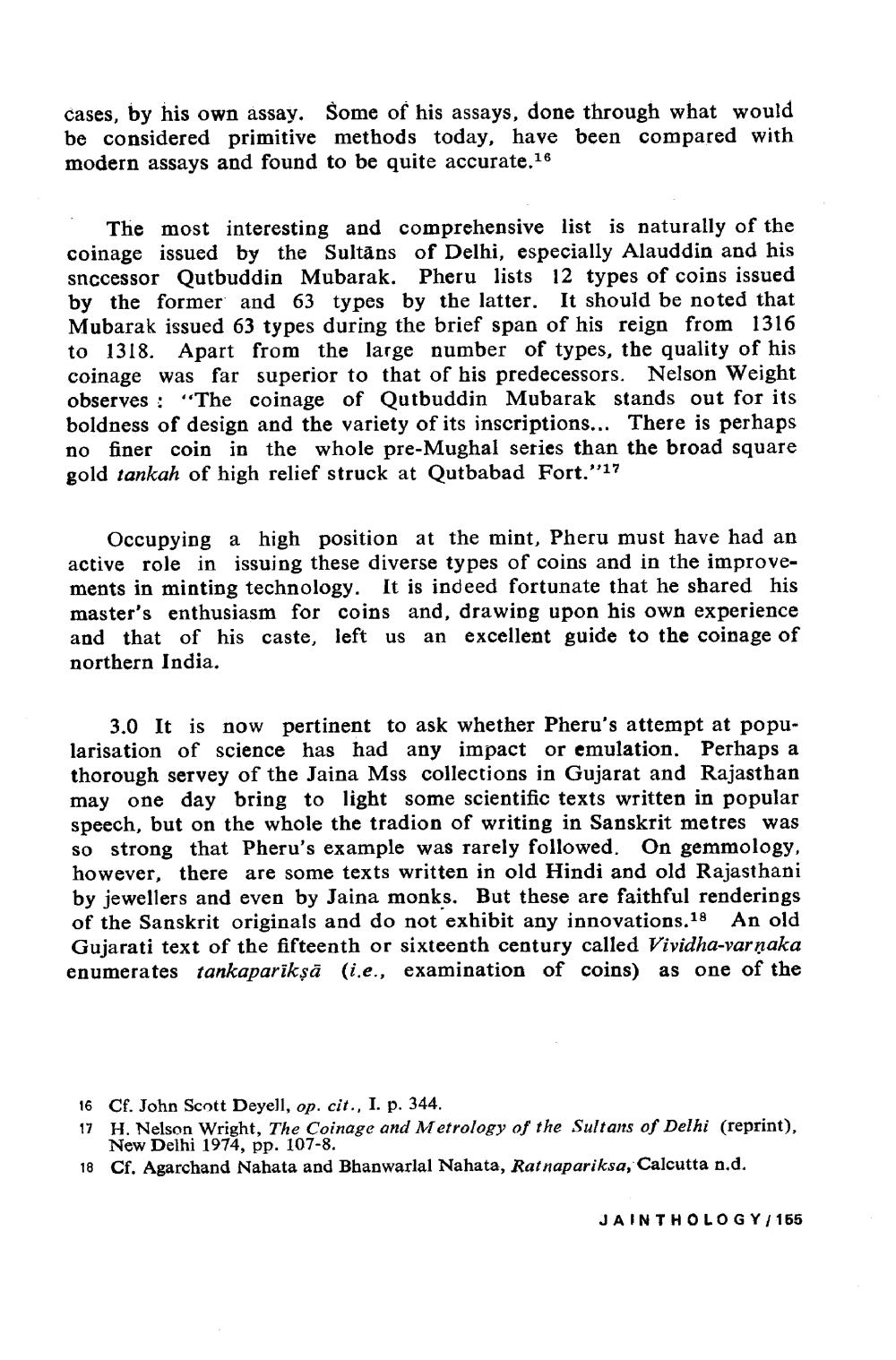________________
cases, by his own assay. Some of his assays, done through what would be considered primitive methods today, have been compared with modern assays and found to be quite accurate.16
od 63 types. Pheru listespecially Alaiturally of the
The most interesting and comprehensive list is naturally of the coinage issued by the Sultans of Delhi, especially Alauddin and his snccessor Qutbuddin Mubarak. Pheru lists 12 types of coins issued by the former and 63 types by the latter. It should be noted that Mubarak issued 63 types during the brief span of his reign from 1316 to 1318. Apart from the large number of types, the quality of his coinage was far superior to that of his predecessors. Nelson Weight observes: "The coinage of Qutbuddin Mubarak stands out for its boldness of design and the variety of its inscriptions... There is perhaps no finer coin in the whole pre-Mughal series than the broad square gold tankah of high relief struck at Qutbabad Fort."17
Occupying a high position at the mint, Pheru must have had an active role in issuing these diverse types of coins and in the improvements in minting technology. It is indeed fortunate that he shared his master's enthusiasm for coins and, drawing upon his own experience and that of his caste, left us an excellent guide to the coinage of northern India.
3.0 It is now pertinent to ask whether Pheru's attempt at popularisation of science has had any impact or emulation. Perhaps a thorough servey of the Jaina Mss collections in Gujarat and Rajasthan may one day bring to light some scientific texts written in popular speech, but on the whole the tradion of writing in Sanskrit metres was so strong that Pheru's example was rarely followed. On gemmology, however, there are some texts written in old Hindi and old Rajasthani by jewellers and even by Jaina monks. But these are faithful renderings of the Sanskrit originals and do not exhibit any innovations.18 An old Gujarati text of the fifteenth or sixteenth century called Vividha-varņaka enumerates tankaparikṣā (i.e., examination of coins) as one of the
16 Cf. John Scott Deyell, op. cit., I. p. 344. 17 H. Nelson Wright, The Coinage and Metrology of the Sultans of Delhi (reprint),
New Delhi 1974, pp. 107-8. 18 Cf. Agarchand Nahata and Bhanwarlal Nahata, Ratnapariksa, Calcutta n.d.
JAINTHOLOGY/155




